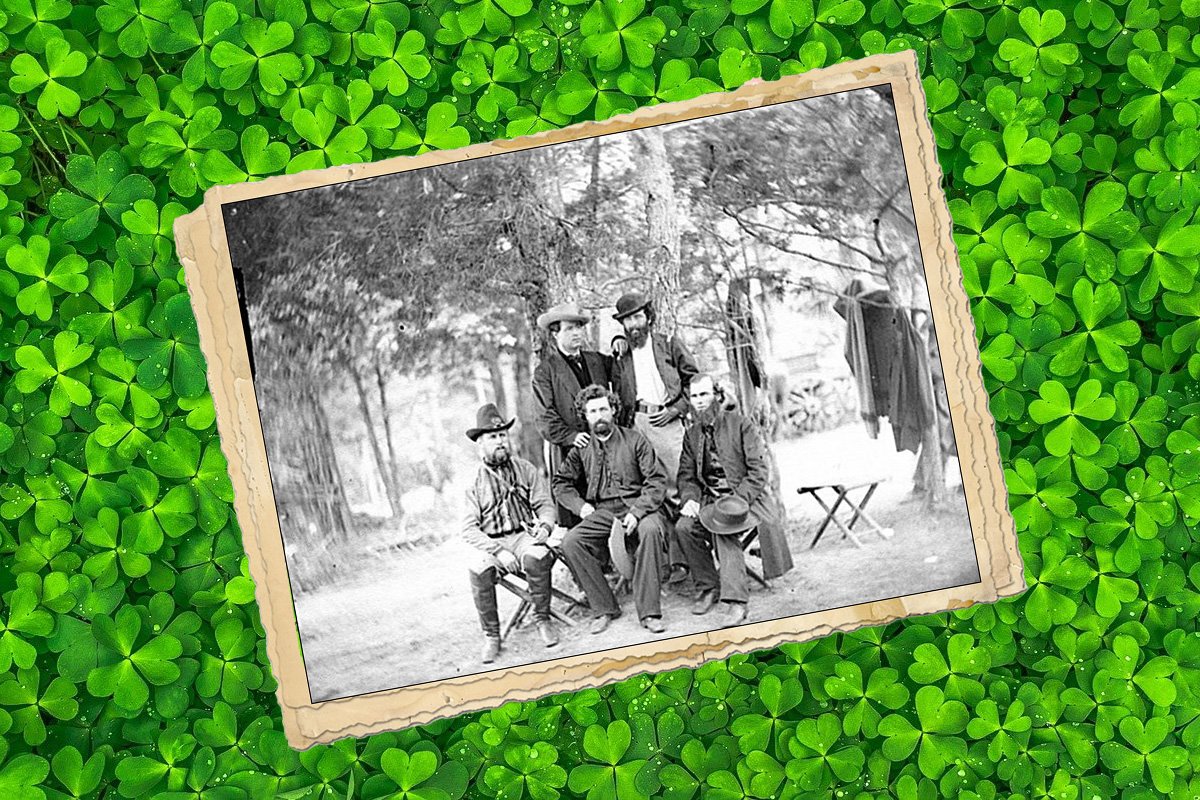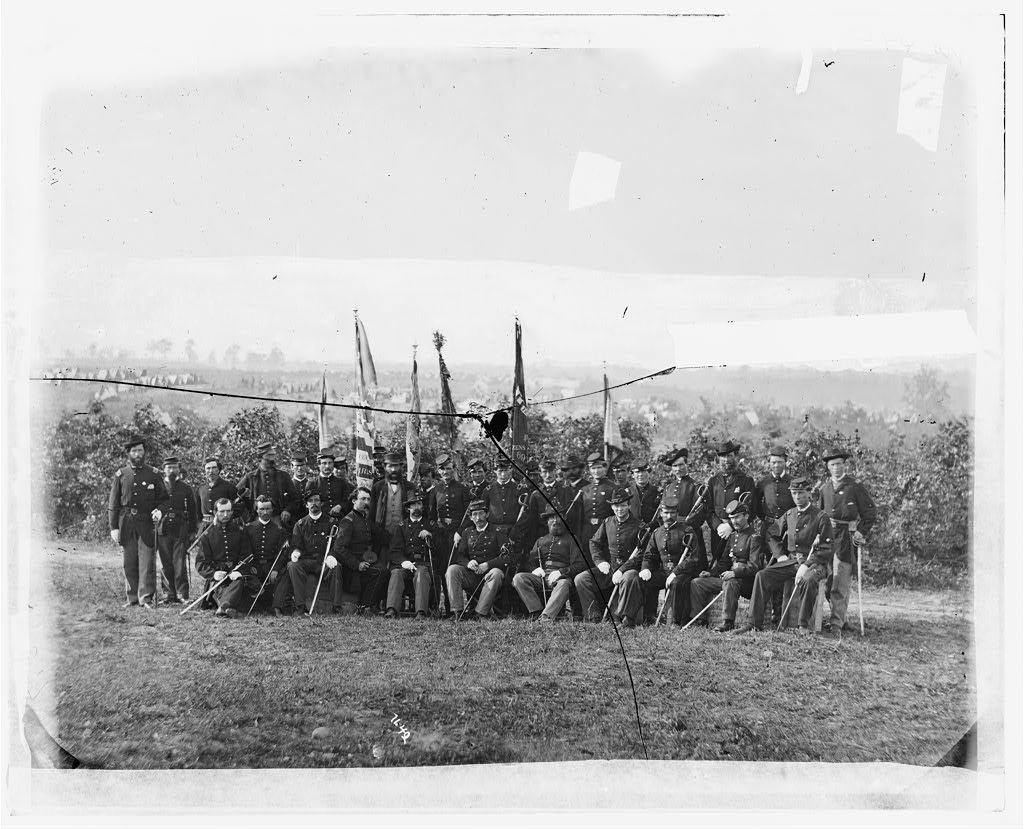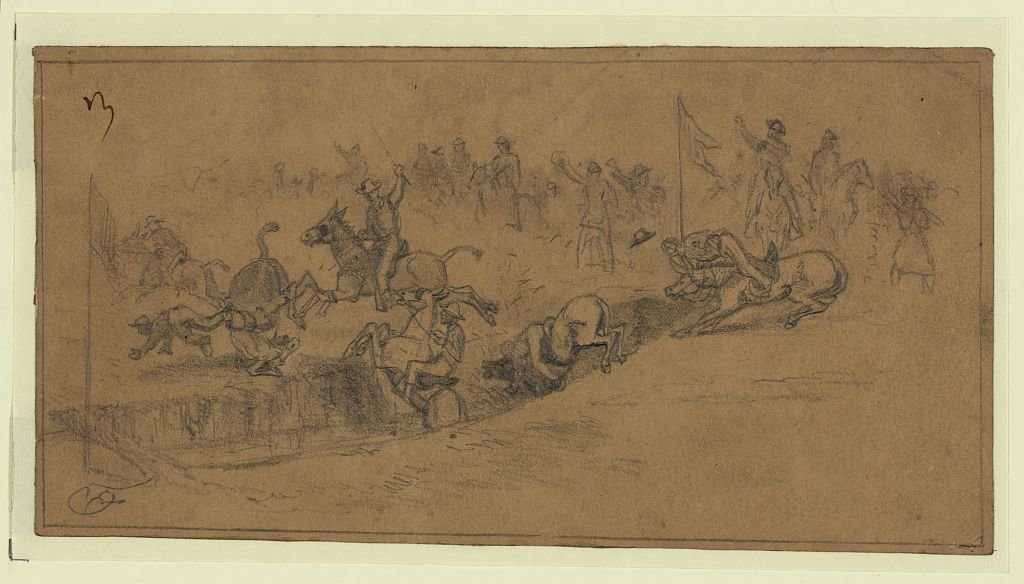‘Clear the Way’: How the Irish Brigade Celebrated St. Patrick’s Day in the Civil War

Five members of the Irish Brigade pose for a photograph in 1862 at Harrison’s Landing, Virginia, during the Peninsular campaign. Photo courtesy of the Library of Congress. Composite by Coffee or Die Magazine.
For the Irish regiments of the Union Army, St. Patrick’s Day was more than just the green beer, shamrocks, and leprechaun mascots seen around cities and small towns of America today. It served as a much-needed rallying cry midway through the Civil War.
When the Civil War broke out in 1861, more than 150,000 Irish immigrants and Irish Americans enlisted in the Union Army ready to fight. Many of these Irishmen turned professional soldiers formed five regiments across three states: the 63rd, 69th, and 88th New York Infantry Regiments; the 116th Pennsylvania Infantry Regiment; and the 28th Massachusetts Volunteer Infantry Regiment.
Many soldiers in the so-called Irish Brigade tested their mettle across several major Potomac battlefields between 1861 and 1863. In honor of their Irish heritage, regiments adopted the Gaelic battle cry “Faugh a Ballagh,” meaning “Clear the way!”

The Irish Brigade helped force Confederate Gen. Robert E. Lee to abandon his invasion of the North and retreat to Virginia following the bloody Battle of Antietam. However, the Irish soldiers suffered catastrophic losses of two-thirds of their forces during the doomed Battle of Fredericksburg in December 1862.
“Irish blood and Irish bones cover that terrible field today,” wrote one soldier, according to History.com. “We are slaughtered like sheep.”
Despite the crushing blow to morale, the Irish Brigade still made sure to celebrate St. Patrick’s Day on March 17, 1863, with a horse race and other festive traditions.
“To come off the 17th March, rain or shine, by horses, the property of, and to be ridden by, commissioned officers of that Brigade,” read the announcement of the Grand Irish Brigade Steeple-Chase. “The prizes are a purse of $500; second horse to save his stakes; two and a half mile heat, best two in three, over four hurdles four and a half feet high, and five ditch fences, including two artificial rivers fifteen feet wide and six deep; hurdles to be made of forest pine, and braced with hoops.”
The race attracted scores of spectators to the St. Paddy’s Day event, including the Army of the Potomac, several newspaper correspondents covering the war, and artist Edwin Forbes.

“St. Patrick’s Day in camp was celebrated with the usual gayety and rejoicing by the men composing the Irish Brigade,” recalled Col. St. Clair Mulholland of the 116th Pennsylvania, according to a website dedicated to the 28th Massachusetts Volunteer Infantry Regiment. “This time-honored national anniversary was observed with all the exhaustless spirit and enthusiasm of Irish nature.”
A post-race feast included at least 35 hams, a roasted ox, a pig stuffed with boiled turkeys, chickens, ducks, and small game. The soldiers ensured alcoholic beverages accompanied every plate, including stockpiles of eight baskets of champagne, 10 gallons of rum, and 10 gallons of whiskey.
After the feast, more sports entertained the guests. Some of the exciting contests included a half-mile footrace open to all noncommissioned officers and privates; a soaped pig chase; a wheelbarrow race in which contestants were blindfolded; and a dance-off. All activities included cash prizes.
The evening concluded with refreshments, more alcoholic beverages, songs, and poems.
The Irish Brigade officially disbanded in June 1864, but Forbes’ pictorial evidence and attendees’ memories immortalized the occasion when St. Patrick’s Day offered one brigade a momentary reprieve from the horrors of the Civil War.
Read Next: A Brief History of Irish Coffee & How It Came to the US

Matt Fratus is a history staff writer for Coffee or Die. He prides himself on uncovering the most fascinating tales of history by sharing them through any means of engaging storytelling. He writes for his micro-blog @LateNightHistory on Instagram, where he shares the story behind the image. He is also the host of the Late Night History podcast. When not writing about history, Matt enjoys volunteering for One More Wave and rooting for Boston sports teams.
BRCC and Bad Moon Print Press team up for an exclusive, limited-edition T-shirt design!
BRCC partners with Team Room Design for an exclusive T-shirt release!
Thirty Seconds Out has partnered with BRCC for an exclusive shirt design invoking the God of Winter.
Lucas O'Hara of Grizzly Forge has teamed up with BRCC for a badass, exclusive Shirt Club T-shirt design featuring his most popular knife and tiomahawk.
Coffee or Die sits down with one of the graphic designers behind Black Rifle Coffee's signature look and vibe.
Biden will award the Medal of Honor to a Vietnam War Army helicopter pilot who risked his life to save a reconnaissance team from almost certain death.
Ever wonder how much Jack Mandaville would f*ck sh*t up if he went back in time? The American Revolution didn't even see him coming.
A nearly 200-year-old West Point time capsule that at first appeared to yield little more than dust contains hidden treasure, the US Military Academy said.












